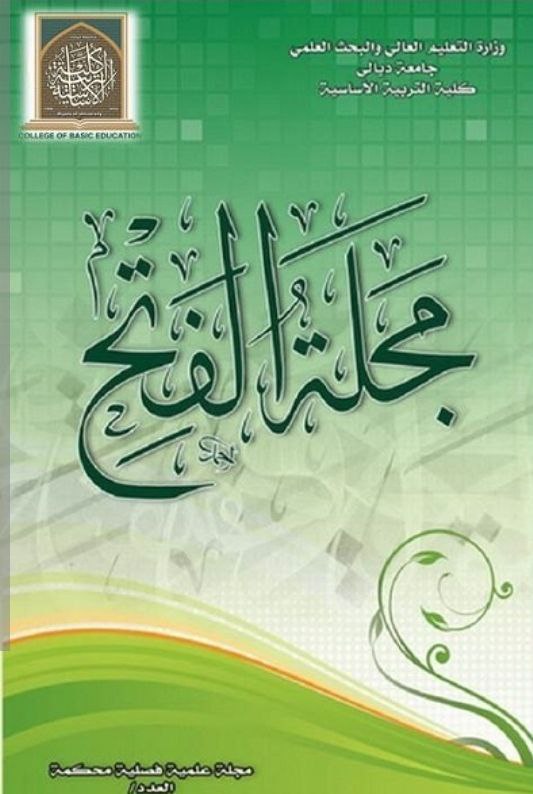العلاقة بين عمليات الكتابة و التخوف من الكتابة بين الطلاب العرب
الكلمات المفتاحية:
الكلمات المفتاحية: الكتابة , عمليات الكتابةالملخص
المستخلص :
تعتبر الكتابة في اللغة الانكليزية من أهم مصادر التعبير عن الافكار حيث تحتاج من متحدث اللغة الثانية وهي اللغة الانكليزية ان يكون متقن للمفردات و كيفية تكوين الجملة قواعديا و معنى صحيح . ومن خلال سنوات التدريس , حيث تم اكتشاف ان طلاب الدراسات العليا العرب من جامعة اوتارا ماليزيا يواجهون مشاكل في كيفية نقل افكار الطلاب الى كلمات مكتوبة. ومن هذا البحث , تم التحقق من ذلك عبر استخدام استبيان يعتمد على اولا: هل عمليات الكتابة الرئيسية الثلاثة وهي قبل كتابة المقالة (التخطيط), عند كتابة في اللغة الانكليزية (التركيب), و بعد الكتابة (المراجعة) يتم تطبيقها عند الكتابة. ثانيا: هل تطبيق عمليات الكتابة الرئيسية الثلاثة لها علاقة مع التخوف من الكتابة. ومن هنا اظهرت النتائج ان عمليات الكتابة الثلاثة لم يتم اتباعها من خلال الطلاب اثناء الامتحان حيث ان هذة الحالة تجعل الطلاب اكثر تخوفا. اضافة الى ذلك, لا يوجد فروقات احصائية بين عمليات الكتابة و التخوف من الكتابة و نتائج هذه الدراسة تتطلع الى الاكثر من اجل البحث عن كيفية تحسين كتابة الطلاب باتباع عمليات الكتابه ومحاولة التقليل من حجم التخوف من الكتابة اثناء الامتحان.
الكلمات المفتاحية: الكتابة , عمليات الكتابة
المراجع
Reference
Abu Shawish, J. (2009). Analysis and Assessment of Palestinian EFL Majors' written English. Unpublished Ph.D. Thesis. Sudan University of Science and Technology, Sudan.
Al- Ahmad, S. (2003). The impact of collaborative learning on L1 and L2 college students' apprehension about and attitudes towards writing. Unpublished doctoral dissertation, Indian University of PennsyIvania.
Aristotle (1938). On Interpretation Translated by Harlod P.Cooki.pp.111-179 in Aristotle, Volume, Loab classical library London; William Heineman.
Atay, D. & Kurt,G. (2006). Prospective teachers and L2 writing anxiety. Asian EFL Journal, 8(4), 100-118. Retrieved July 20,2010, from http://www.asian-efl-journal.com/Dec 06da&gk.php.
Atay, D. & Kurt, G. (2007). Prospective teachers and L2 writing anxiety. The Asian EFL Journal Quarterly December 2006 Volume 8, Issue 4, 8(4), 100.
Betancourt, F. & Phinney, M. (1988). Sources of writing block in bilingual writers. Written Communication, 5(4), 461-478.
Bloomfield RE (1990) SafeIT, the safety of programmable electronic systems: a government consultation document on activates to promote the safety of computer-controlled systems. Department of Trade and Industry.
Brookes, A. & Grundy, P. (1998). Beginning to write. Englewood Cliff, N.J Prentice-Hall.
Cave, G. (1972) 'From controlled to free composition' English Language. Teaching.26:262
Clark, D. (2005). Exploration into Writing Anxiety: Helping Students Overcome their Fears and Focus on Learning.ISSOTL Conference.
Daly, J.W., & Plano Clark, V.L. (2007). Designing and conducting mixed methods research. Thousand Oaks, CA: Sage.
Daly, J. (1978). Writing Apprehension and Writing Competency Research. Journal of Educational Psychology, 72(1), 10-14.
Daud, N.M., and Abu Kassim, N. L. (2005). Second Language Writing Anxiety: Cause or Effect. Malaysian Journal of ELP.
Ezza,E., S. (2010). Arab EFL learners' writing dilemma at Tertiary level. English Language Teaching, 3, (4), 33-39. Retriteved from: http://www.ccsenet.org/journal/index.php/elt/article/view/6407/6176.
Flower, L. S. and Hayes, J. R. (1981) A cognitive process theory of writing. College Composition and communication, 32(4), 365-387.
Hanna, K. J. (2010). Student perceptions of teacher comments: Relationships between specific aspects of teacher comments and writing apprehension. PH.D Dissertation, The University of North Dakota.
Harris,E.C. (1975). The stratigraphic sequence: A question of time. World Archaeology 7:109-21.
Hayes, J. R. (1996). A new framework for understanding cognition and affect in writing. In C.M. Levy and S. Ransdell (Eds.). the science of writing: theories, methods, individual differences, and application (pp. 1-55). Mahwah, NJ: Lawrence Erlbaum Associates.
Hayes, J. R. and Flower, L.S. (1980). The dynamics of composing. In L.W. Gregg & E.R. Steinberg (eds.) Cognitive Processes in Writing. Hillsdale, NJ: Lawrence Erlbaum Assoc., Pub. Hayes, J.R. and Flower.
Hughey,J.B., wormuth. D.R., Hartfiel, V.F., & Jacobs, H.L. (1983). Teaching ESL Composition: Principal and Techniques: Why Write? Writing is Lifetime Skill. Newbery House Publishers, Inc.
Huwari, I., & Hashima, N. (2010, December). Oral Communication Apprehension in English among Jordanian Postgraduate Students in Universiti Utara Malaysia. In Proceeding of the 3rd International Conference on International Studies (ICIS?), 1-2 December, Kuala Lumpur, Malaysia. Retrueved from: http://repo.uum.edu.my/id/eprint/2498.
Nor Shidrah Mat Daud., Noor Lide Abu Kassim., & Nuraihan Mat Daud. (2006). or Second Language writing anxiety: Cause effect? Retrieved September 15, 2010 from http://www.melta.org.my/Doc/second_lang_writng_anxiety.pdf.
Polit, D.F., Hungler, B.P.(1999) Nursing Research: Principles and Methods (6th edn). Philadelphia: J.B. Lippincott.
Raimes (1984). English as a second language? Remedies for composition teachers. In S.Mckey(Ed.).Compesing insecond language (81-96). Rowley,Mai New bury House.
Raisman, N. (1982). I just can't do English: Writing anxiety in the classroom. English in the Two-year college, 9(1), 19-23.
Richard, J.C., Platt, J. & Platt, H. (1992). Dictionary of language teaching & applied linguistics. Essex:Longman
Salem, M.S,A.S.(2007). The effect of journal writing on written Performance, writing apprehension, and attitudes of Egyptain English majors. PH.D Dissertation, The Pennsylvania State University.
Tribble, Christopher, Writing. Oxford: Oxford UP, 1996. Print.
Thompson, M.A. (1987). Reducing Writing Apprehension in English classes. Paper presented at the Annual Meeting of the National Council of teachers of English Spring Conference, March 26-28, 1987,Louisville.
White, R. (1981). Approaches to writing Guidelines,6,1-11.
Williams, G.C.(1998) Collocational networks: interlocking patterns of lexis in a corpus of plant biology research articles. International Journal of corpus Linguistics3,1,151-171.
التنزيلات
منشور
كيفية الاقتباس
إصدار
القسم
الرخصة
الحقوق الفكرية (c) 2017 مجلة الفتح

هذا العمل مرخص بموجب Creative Commons Attribution 4.0 International License.
حقوق النشر والترخيص
تطبق مجلة الفتح للبحوث التربوية والنفسية ترخيص CC BY (ترخيص Creative Commons Attribution 4.0 International). يسمح هذا الترخيص للمؤلفين بالاحتفاظ بملكية حقوق الطبع والنشر لأوراقهم. لكن هذا الترخيص يسمح لأي مستخدم بتنزيل المقالة وطباعتها واستخراجها وإعادة استخدامها وأرشفتها وتوزيعها ، طالما تم منح الائتمان المناسب للمؤلفين ومصدر العمل. يضمن الترخيص أن المقالة ستكون متاحة على نطاق واسع بقدر الإمكان وأن المقالة يمكن تضمينها في أي أرشيف علمي.
لمزيد من المعلومات، يرجى متابعة الرابط: https://creativecommons.org/licenses/by/4.0/.



